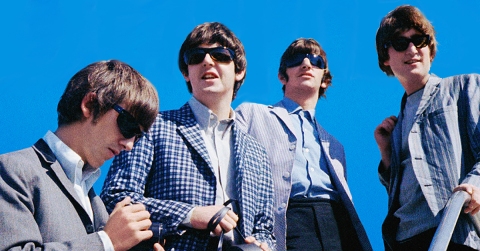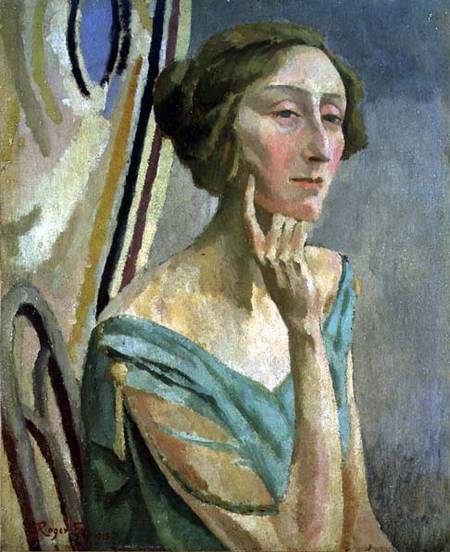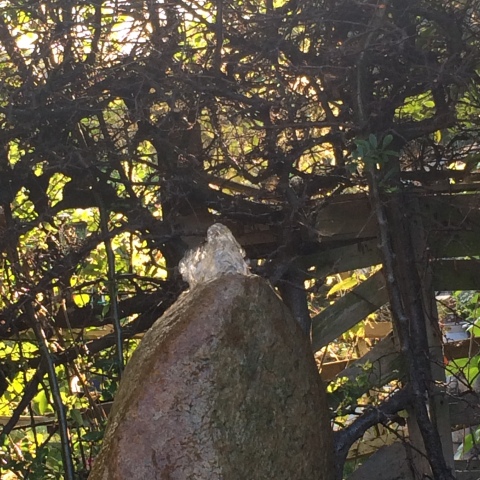Archive for September, 2016|Monthly archive page
Three Days a Week

Eight Days a Week
Day 2: Liverpool

So I’m sitting in front of Liverpool Town Hall in the Indian summer afternoon sunshine. I’m discussing a documentary with a Scouse film-maker, the protagonist of the film and the cameraman. We’ve just arrived, the beers have just landed and out of the open balcony door of the Town Hall tumble the strains of Let It Be. Then more Beatles. Then a female singer doing covers of their songs. I couldn’t have scripted or timed it any better. My fantasy Liverpool afternoon. After the meeting I trotted down the street to the Odeon for the world premiere of the Beatles documentary, Eight Days A Week, put together by Ron Howard. The red (actually blue) carpet shenanigans were broadcast live from Leicester Square to this and other cinemas around the country and beyond, including the arrival of Paul and Ringo. Where better to watch it than in Beatlesville. The moment and song that punched out was when John composed Help. It stood out as the point when their song-writing went up a gear or three.

Day 1: Sheffield

Spent the day working with an indie producer in Sheffield – which was fun. After we wrapped for the afternoon, I headed into the city centre from the atmospheric, leafy burbs. In the golden early evening sunlight surveyed the city’s excellent array of street art, not least the excellent work of Rocket01.

After a fine Mexican beano, hung out chatting in the Peace Gardens with their monumental fountain portals and all-round perfect mix of water, stone and grass. I’m usually in the city for DocFest in the summer so it was good to see it under other circumstances. It has some of the finest regeneration in the country, with a brilliant passage from the station up to the Peace Gardens. The blade sculpture bordering the station with a thin layer of water flowing over the gigantic knife-edge of shining steel. The tower of the university bearing a poem by Andrew Motion about standing looking at the tower of the university. The art deco Showroom cinema. The art deco Library and (Graves) Gallery. The wooden ribs and hothouse glass of the Winter Gardens. The Victorian Town Hall, sheltering the Peace Gardens.

Day 2: Sheffield

Edith Sitwell by Roger Fry
Began the day at a working breakfast with a Sheffield-based film producer who is a very nice guy. Then a quick visit to the Graves Gallery to look at the hidden treasure that is their permanent collection. Catching my eye this time: Christ Carrying the Cross attributed to Luis de Morales (late C16), a prematurely aged, weary Jesus, right beside a striking painting of a man holding a skull, a dark momento mori where the difference between the head and skull is marginal; The Hours by Burne-Jones, six ladies representing the sweep of the day, their dress ranging from dawn blue to late afternoon russet and back to night-time blue-black; a Paul Nash landscape, an Auerbach cityscape of Mornington Crescent; Sam Taylor-Wood suspended from the ceiling (flashback to young John Lennon); a portrait of Edith Sitwell and her languorous hands – one of the best galleries in the land.
Then the train to Liverpool across the Peak valleys bathed in Indian summer gold.
Day 3: Sheffield
Rain after the early hours thunder, making the work at Roco (a new creative co-operative space) all the cosier. A good creative session, inducing headache in the journey to a possible break-through, wrestling with knotty problems between cups of tea. A burst of sun as we left to mark the conclusion in grand style.

“So we sailed on to the sun”
The Beatles – Yellow Submarine
Fighting the Good Fight
To be nobody but yourself in a world which is doing its best, night and day, to make you everybody else means to fight the hardest battle which any human being can fight; and never stop fighting.
— e e cummings

Superhumans v Ability
On the day of the Opening Ceremony of the Rio Paralympics, it’s interesting to contrast the UK television marketing of London 2012 vs Rio 2016

2012: Meet the Superhumans


2012: the week between the Olympics and the Paralympics



2016: Ability

Mandy as Fanny

Terence Donovan’s cover shot of Mandy Rice-Davies for Town (Man about Town) magazine
In 1964 Mandy Rice-Davies was asked to play the lead role in a film of Fanny Hill, based on the novel by John Cleland. However, the film was never made.
This cover shot is currently to be seen at Terence Donovan: Speed of Light at The Photographers Gallery, London.
This is a magazine/pamphlet I bought at an antique shop near Woodside Park for a tenner. It’s Mandy’s response to the Denning Report into The Profumo Affair, hence the cheeky title.

“Well he would, wouldn’t he?”
Here’s the house of Mandy’s lover Peter Rachman – I found it on Sunday after a walk on Hampstead Heath.

Freebird

Back in 2000 I chaired a task group for the Broadband Stakeholders Group (a body lobbying the Government for better broadband connectivity) looking at the probable impact of broadband on the UK workplace. One of the group’s conclusions was that it would have a positive impact on the environment and transport because it would enable workers to do more locally or at home, thereby reducing the need for the daily commute.
From 2000 to 2013 I spent much of my life on a tube train across the city, mostly for no good purpose. I stopped that on 9th July 2016 when I left Channel 4 after 13 glorious years.
I am now working in a peripatetic style and not only thoroughly enjoying it (and the summer) but actually finding creative inspiration from it. I knew this from the sabbatical I took in 2013-14 to write during which I wrote in all kinds of places from the National Library, Dublin to the kitchen garden of Kenwood – and chronicled it here on Simple Pleasures.
As my working week drew to an end yesterday in a steam room near Gray’s Inn followed by a last hour-long burst of writing in some barristers chambers (very productive and clear-minded) I reflected back on a classic week of working on the move which I feel like capturing here for posterity because the working locations were such an inspiration in themselves; reflect the rich mix I plan to make the defining characteristic of my work life going forward; and brought with them such uplifting experiences.
So this week I have worked…
- in Borough, in the shadow of London Bridge – with Mark Stevenson, writer and futurist, on a project about the sustainable future of energy, feeding on his always refreshing optimism
- at BAFTA, one of my two pied-à-terres in central London, where I had a key meeting with an always-inspiring former colleague about the film script I am currently writing (for an energetic British production company whose early successes are very promising)
- in the garden of the Chelsea Arts Club where I met a film-maker whose father knew the protagonist of my movie and from whom I got a useful sense of the kind of person he was. This particular stop brought the highlight of the week as we were joined in the sun-bathed garden by the poet Brian Patten, a charming, witty and warm man from the evidence of this first encounter. In fact it was in a way my second encounter as I saw him perform live in Cambridge around 1984 with his fellow Liverpool poets Roger McGough and Adrian Henri. He gave wise advice concerning my younger son, who has severe dyslexia, and his literary studies. A young priest in exquisitely made robes entered the garden at one point and sat at the adjoining table. At which juncture Brian leaned over the table and recited a brilliant poem about a falling priest, without the faith or courage to fall freely. Brian had based the poem on an ancient Sufi text. It was a beautiful and unexpected gift of words that made my week.
- in a restaurant in Victoria where an old Channel 4 colleague of mine turned out to be pals with a director who would be perfect for the film
- outside Kipferl, an Austrian cafe at The Angel, one of my favourites, where I caught up with Harry Cymbler, MD of Hot Cherry (where I am a Non-Exec)
- in the Reading Room of Somerset House where I drafted an application for Creative England with my co-producer
- in the newly opened Eneko Basque restaurant, scion of Eneko Atxa’s Michelin-starred place Azurmendi in Larrabetzu (in the Basque country in Northern Spain), where we finished drafting the application either side of a beautiful meal of Iberico pork and fruity wine punch
- in my back garden where I carried on writing the treatment to the tranquil sounds of my newly resurrected water-rock (I can’t possibly use the term ‘water feature’, it’s so Home Front). I copied the water-rock from the courtyard of a hotel in Newry, County Down – it definitely irrigates creativity.
- in Raymond Buildings, Gray’s Inn in a room with a photo of my lower sixth English class, a reminder of a very inspirational year with a very inspirational teacher (in the photo sporting a velvet jacket).
There’s a lot to be said for wandering freely. As I read in The Week earlier this very enjoyable week, Nietzsche was also much in favour of being on the move:
All truly great thoughts are conceived by walking.

The Water-Rock

Eneko on the Aldwych

Eneko Basqueness

Chelsea Arts Club


Gray’s Inn
4 reasons to go see Café Society
Tomorrow sees the UK release of Woody Allen’s latest movie, Café Society, starring Jesse Eisenberg (The Social Network, Holy Rollers, Batman v Superman), Kristen Stewart (Twilight, On The Road) and Steve Carell (The Big Short, Foxcatcher). Here are 4 reasons why it is not to be missed…

Vonnie (Kristen Stewart) & Bobby (Jesse Eisenberg) fail to have dinner in his rooms
1. Vittorio Storaro’s coffee-coloured cinematography
Now into his late 70s, Storaro is the man who photographed Apocalypse Now, The Last Emperor and Bulworth (the first and last of these being among my very favourite films). In this movie he paints 30s Hollywood and New York in a palette of yellows and browns which is as delicious as a cup of Jamaican Blue Mountain with a dash of cream, making it the most beautiful looking film you’re likely to see this year. He is already working on Woody Allen’s next.
Rose: Too bad Jews don’t have an after-life – they’d get a lot more customers.

Vonnie faced with a heart-breaking dilemma
2. Woody Allen’s masterful writing
Phil: Two time Academy Award winner.
Bobby: Wow, congratulations.
Hollywood Writer: Thank you. You’ve never heard of me, I’m a writer.
Having written nearly 80 films, Woody has gotten pretty darn good at it. Café Society has absolute economy – you see what you need to see, you hear what you need to hear, you linger when you’d like to linger, you catch fleeting words and moments that delight. You get the laughs, you get the philosophy, your heart-strings get tugged, all leading to a bitter-sweet moment that doesn’t even need any words.

Grown up Vonnie
3. Santo Loquasto’s Production Design
Woody’s Production Designer since 1987’s Radio Days, Loquasto delivers again – a golden LA at the height of the studio years contrasts with a darkened NYC of clubs, cramped apartments and alleyways. The film opens on a luxurious poolside party beside a bright white Deco mansion – Hockney meets Gatsby – and sets the tone: this is a world to which we’re going to enjoy every minute of our visit.
Party Guest: [to Bobby] Unrequited love kills more people a year than tuberculosis.

Bobby’s fashionable club in New York
4. Unique Story-telling
No-one in the movies tells a story quite like Woody Allen in his elder statesman years. It’s thoroughly American. Profoundly Jewish. Shot through with European. Café Society has the voice-over of the early faux-documentary films (e.g. Take the Money and Run), performed by the ageing voice of the writer-director, rich and literary but still restrained and judicious. It has that distinctive Allen thing of having a young Woody avatar – there’s an aspect of Eisenberg’s performance which is reproducing Woody’s screen persona – much like Owen Wilson’s excellent performance in that other fabulous late bloom that was Midnight in Paris – yet he transcends it to produce a poignant and memorable lead character living a poignant and terrible love.
Narrator: Life is a comedy written by a sadistic comedy writer.
 Leave a comment
Leave a comment

